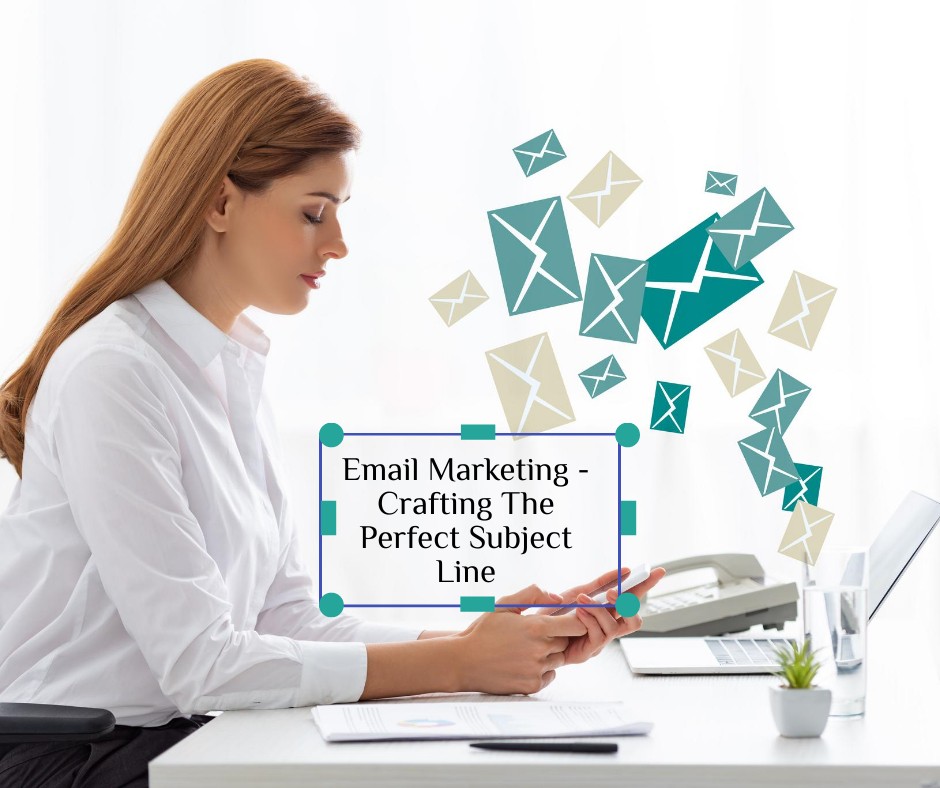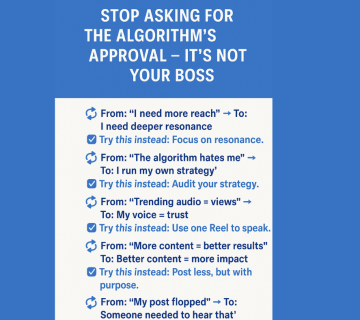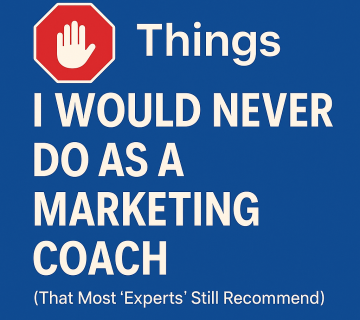 The subject line of your email is like the headline in a newspaper. It’s what gets people’s attention. It creates curiosity in them and compels them to read the rest of the email.
The subject line of your email is like the headline in a newspaper. It’s what gets people’s attention. It creates curiosity in them and compels them to read the rest of the email.
A great subject line can result in a very high open percentage on your emails, while a mediocre subject line will almost always produce mediocre results.
On average, most people get dozens of emails every single day. If you want others to actually read your email, you must get their attention right away.
Megan Marrs says this:
Your subject line is your first (and maybe your last) impression on users. In many ways, your email subject line is more important than your email body. After all, a great newsletter is worthless if it never sees the light of day.
So, avoid skimping on your subject line. If you want people to actually read your emails (which is the whole point), it’s essential to spend a fair amount of time crafting the perfect subject line.
So, what makes for a great subject line?
Here are eight formulas you can use to get the attention of your readers.
- The Question
Questions make for outstanding subject lines because they force the reader to stop and think for a moment. They make the reader ponder how they will answer the question.
And they create a sense of curiosity. They make the reader want to know how you will answer the question as well.
For example, consider these subject lines:
- Can you relate to this?
- Do you feel like this too?
- What do you think about this idea?
- Do you feel exhausted without your morning coffee too?
- Do you make the same mistake I do?
All these subject lines create what’s called a “pattern interrupt” for the reader. In other words, they interrupt the reader as they mindlessly scroll through their inbox and force them to pay attention to your email.
They also push the reader to click on the email because they want to know how the question gets answered.
- The How To
People love to learn new things that are especially relevant to their lives. This is why DIY videos are so popular on YouTube. People have questions and they want answers. Using a how to subject line piques people’s interest, especially if it’s really relevant to them.
For example:
- How to quickly get 1,000 email subscribers
- How to get that nasty stain out of your shirt
- How to make 10 sales every single day
- How to win friends and influence people
Again, these subject lines interrupt the reader as they peruse their inbox. They cause the reader to think, “Is this something that I want or need to learn?”
If it is, they’ll click on the email.
It’s important to note that in order for the how to email to actually work, you must know your audience. In other words, you need to know what they want to know how to do.
As noted earlier, you need to be able to get inside the minds of your readers. If you don’t, your emails won’t be relevant.
- Scarcity
People are always afraid of missing out on something good. In fact, there’s even a term for this fear: FOMO (Fear Of Missing Out). You can capitalize on this fear in your subject lines. If you can create a sense of scarcity with your subject line, there’s a greater chance that people will click on your email.
What does scarcity look like in a subject line?
- Only 2 days left!
- Almost out of stock! Get yours now!
- Only three hours left to register
- This will be gone very soon
- You’re almost out of time!
- Only 4 spots left for a consultation
Your goal is to make the reader feel like if they don’t take action, they’ll seriously miss out on something. The more you can make your reader feel like things are urgent, the more likely it is that they’ll open your email.
- An Announcement
Announcements trigger something in us. We want to be in the know, up to date, and always on top of things. We don’t want to miss out on any important information.
When you use words like “New” or “Introducing” or “Just Added,” you make people feel like there is important, breaking information that they need to know.
For example:
- An important update to our app
- New: a faster way to get paid
- Introducing the best way to create beautiful photos
- An invitation just for you
You want people to feel like they must open the email if they’re going to stay up to date on information. Think about your own life. You don’t want to miss out on critical information. In fact, there’s even a fear of missing out on critical information.
You want to create that same sense of anticipation and even fear in your readers.
- The Numbered List
It’s no secret that people absolutely love lists. It’s why magazines constantly use headlines like “10 Ways To Get In Shape Fast.” We like it when things are quickly broken down for us to scan.
When things are presented in list format, we can easily get a sense of the entire thing.
You can take advantage of this by using list format subject lines.
What would these subject lines look like?
- The 4 best email marketing tools you need to be using
- 7 ways to beat anxiety today
- 15 ways to quickly build your email list
- 9 methods for getting in shape quickly
- 6 steps to overcoming the blues
List subject lines also tap into our desire to gain information. We know that because things are presented in list format, we’ll be able to quickly get information that we wouldn’t otherwise.
- The Curiosity Gap
Websites like Buzzfeed constantly create curiosity with their headlines. They’ll write something strange in their headline and then answer it in the body of the article.
For example, they might say something like “You Never Knew This About Santa Claus.” Of course, this makes you want to know what you never knew about Santa Claus. You then have to read the article to find the answer.
You can use this same tactic with the subject lines of your emails.
For example:
- A little-known trick to bust belly fat
- He asked me a question that I couldn’t answer
- Well, I certainly wasn’t expecting this
- Most people get this completely wrong
- I don’t understand why this keeps happening
The subject line should create a question in the reader’s mind. What is the little-known trick to bust belly fat? What exactly weren’t you expecting? What do most people get wrong?
Then, in the email, you actually answer the question. It’s really important that you actually answer the question in the email. Otherwise, your readers could feel like they were duped by the subject line.
- Surprise
Studies have shown that when people are surprised (in a good way), it lights up the pleasure center of the brain. We like to be surprised, and if you can surprise your readers with your subject line, there’s a much better chance they’ll open your email.
How can you surprise your readers? Make them laugh. Force them to think about something unexpected. Cite a surprising statistic.
Your goal is to force them to stop scrolling through their inbox and pay attention to what you’re saying.
A surprise subject line could look like:
- What Elvis Presley can teach you about email marketing
- Unexpected lessons learned from a bout with the flu
- I’m so frustrated!
- Warning: this email will self-destruct in 5 minutes
When people are surprised, they are also delighted. If you can delight people with your subject line, they’re almost sure to open your email and read the rest of it.
Again, it’s important that the body of your email actually match up to the subject line. You don’t want your readers to feel like you tricked them.
- Personalized
We all love to hear our own names. In fact, in his hugely popular book How To Win Friends and Influence People, Dale Carnegie says that there is nothing sweeter to a person than hearing their own name.
You can use this to your advantage in your email subject lines. A recent study on subject lines found that including a person’s name increases the open rate by a whopping 14.68{ebd406824beddcfba747a64d6ebf5cd9712607f65350c4e6a9643ae9d21e61f8}!
Consider combining using a person’s name with other tactics on this list. For example:
- Tim, Elvis Presley can teach you about email marketing
- John, most people get this question wrong
- I don’t understand why this keeps happening, Mary
- Have you ever had this happen to you, Melissa?
It’s hard for a person to ignore something with their name on it. When you use a person’s name in the subject line (and the rest of the email), you compel them to open the email and read it.
Use Your Name In The “From” Section
When setting up the “From” section of your email, be sure to use your name and not just the name of your company. You don’t want your email to look like it’s just coming from a company.
You want it to look like it’s coming from a person who actually cares about the recipient.
Yes, it’s fine to include your company in the “From” section but do it in combination with your name. For example, your “From” section could look like, “John @ Company X”.
Using your name also adds authenticity to the email. It shows that there is a real person behind the email.
A/B Test Your Subject Lines
A/B testing is simply testing one subject line against another to see which one gets the best results. When sending out an email you should always A/B test email subjects against one another.
Most email clients make it really simple to A/B test subject lines. Typically, you just enter in two subject lines and the email client will send out the email to a portion of your subscribers. Once a winner has been determined, the email will be sent to the rest of your subscribers.
Pay Attention To Your Preview Text
In addition to your subject line, it’s also essential that you pay attention to the “preview” text of your email. The preview text usually shows up next to the subject line in the email. If you don’t manually enter preview text, it will simply show the first line of the email.
Your preview text should also be created using one of the tactics above and should give people an additional reason to open your email.
For example, if you ask a question in the subject line, you could ask a follow up question in the preview text. Or if you create a curiosity gap in the subject line, you could write, “You won’t believe the answer,” in the preview text.




